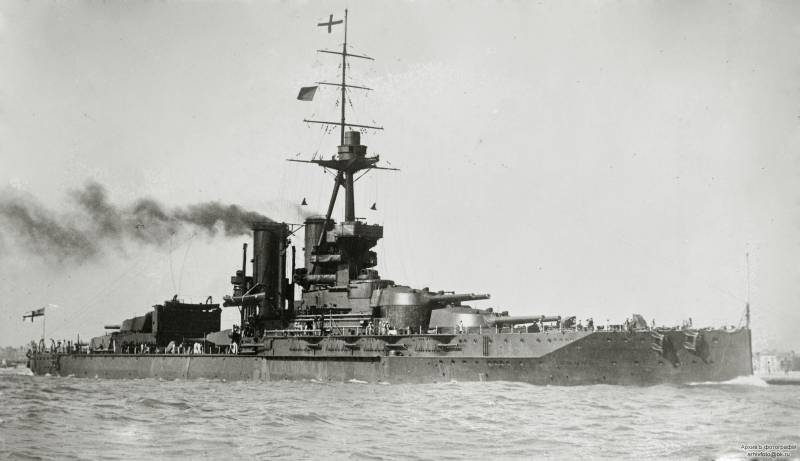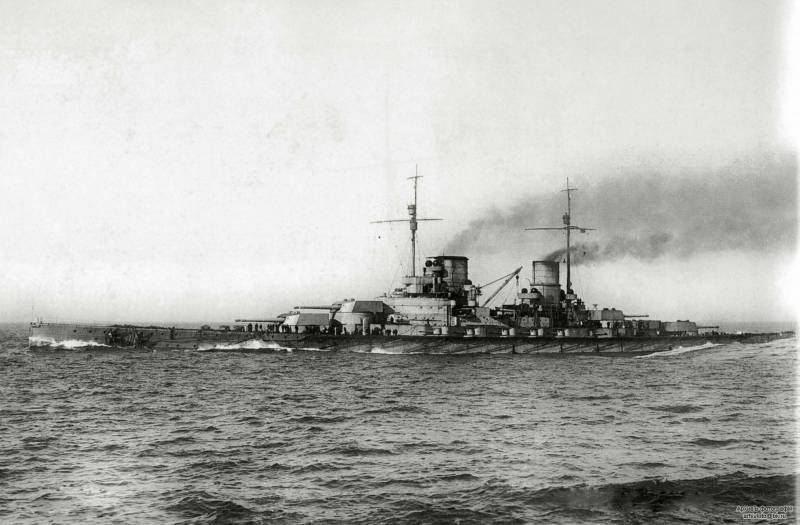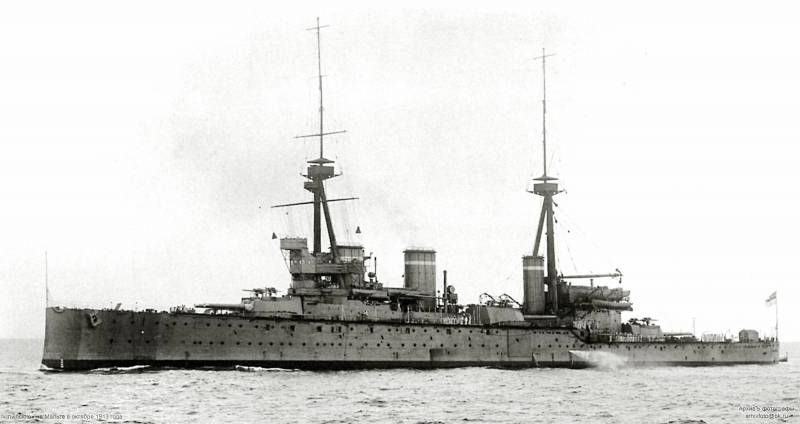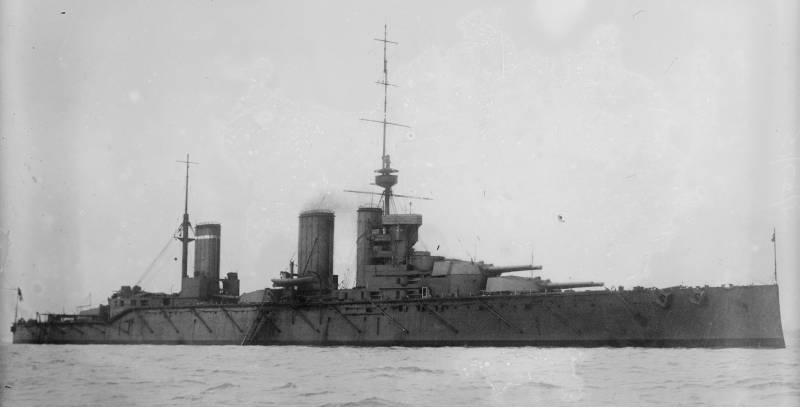About shooting accuracy in the battle of Jutland (part of 1)
The Battle of Jutland, being the largest in stories the collision of linear steam fleets will always attract the attention of lovers of maritime history. In this article, we will look at some of the accuracy issues of German and British battleships and battle cruisers.
It is believed that the British shot at the Jutland battle much worse than the Germans and, if we take into account only the general figures, this is true. For example, according to Puzyrevsky, the Germans spent 3 497 large-caliber projectiles (including 2 324 305 mm and 1 173 - 280 mm) during the battle, achieving 121 hits, which is 3,46% of the total number of shells fired.
The British spent 4 538 heavy shells, including:
1 179 - 381-mm;
42 - 356-mm;
1 533 - 343-mm;
1 784 - 305-mm.
But they only achieved 100 hits, or 2,20%.
Of course, the average values of the fire impact of the fleets are very indicative and important. But we will try to isolate from this average the results of shooting individual detachments or groups of ships: deal with how the battle cruisers Beatty and Hud, the newest British battleships with 381-mm guns of the "Queen Elizabeth" type, fought under the command of Evan-Thomas, dreadnoughts and Jellico's superedrednouts compared to German battleships and battle cruisers.
The course of the Battle of Jutland is repeatedly described in sources, and for a number of ships not only the time of hit of enemy shells is indicated, but also the ships from which these hits were made, as well as where and whom the ship fired (and hit) itself. Of course, such information cannot be absolutely reliable, because two (or more) enemy ships can fire at the same target, and how then can you tell from whom the projectile came from? Again, if, for example, the British Queen Mary had survived, then later it would have been possible to accurately determine not only the number of hits in it, but also the caliber of the shells falling into it. It is known that “Derflinger” and “Seidlitz” were shot at this line cruiser. Since the first one was armed with 305-mm guns, and the second 280-mm, it would be possible to accurately estimate the effectiveness of the fire of the German battle cruisers. But Queen Mary exploded and died, so that the number and caliber of the shells hit it can only be judged from descriptions made by observers from other British and German ships, which are almost never accurate.
It is unlikely that anyone will dispute that in the battle of Jutland, the German "battle cruisers" became the real "heroes of the day." It was they who destroyed the three British battlecruisers, and subsequently covered the retreat of the Dreadnoughts with their heroic attack in all respects. fleet high seas. Let's start with them.
According to sources, the champion of Franz Hipper’s ships (the knight’s title he received after Jutland) was his flagship Lutz.
Having spent 380 305-mm shells, the cruiser achieved 19 hits, including the flagship Beatty "Lion" - 13, "Barham" - 1, "Invinsible" -2 and the armored cruiser "Defense" - 3. The percentage of hits was 5,00%.
In second place is “Derflinger”: 385 spent heavy shells (hereinafter, only the main caliber projectiles are consumed) and 16 hits, including “Princess Royal” - 6, “Queen Mary” - 3, “Barham” - 4 and Invincible - 3. Percentage of hits - 4,16%.
Third place - “Fon der Tann”: 170 shells and 7 hits (“Indefatigeble” - 5, New Zealand ”and“ Barham ”- one by one) Total - 4,12%.
Moltke and Seidlits, for unclear reasons, demonstrated much worse shooting.
There is some ambiguity with the consumption of Moltke shells - according to Muzhenikov, he used 334 shells, according to Puzyrevsky - 359. At the same time the battle cruiser achieved 9 hits in the British "Tiger". What is surprising is that they all occurred in the initial period of the battle (run to the south), and it is likely that at this time Moltke showed the best accuracy among the German battle cruisers. But for some reason, such a brilliant start did not continue: afterwards, Moltke did not achieve a single hit by enemy ships. If Muzhenikov’s projectile consumption data are correct, then the Moltke hit percentage was 2,69%, if Puzyrevsky is right, then 2,51%. According to the author of this article, the husbands are more accurate.
Approximately the same shot out "Seidlits", spent 376 shells, and hit 10 hits: "Queen Mary" - 4, "Tiger" - 2, "Worspite" - 2, "Ear" - 2. Percentage of hits - 2,66%.
In total, the German battlecruisers spent 1645 large-caliber shells (or 1667, if Pulyrevsky was right to use the Moltke missiles) and achieved 61 hits, which accounted for 3,71% (or 3,69%) of the total number of shells fired.
Nevertheless, there is reason to believe that the percentage of hits by Rear Admiral Hipper was even higher. The thing is: after analyzing the hit lists, we will see that Queen Mary has only 7 of them (three from Derflinger and four from Seidlitz). But such calculations are fundamentally contrary to the opinion of eyewitnesses who claim that Queen Mary has got from 15 to 20 shells. In his calculations, Puzyrevsky points out 15 hits on Queen Mary. In the initial phase of the battle, only battlecruisers of the Germans fired at the English ships; the Seydlitz and Derflinger fired at Queen Mary. Accordingly, it can be assumed that these German ships achieved more hits than is commonly believed.
If we assume that Queen Mary got from 15 to 20 projectiles, then the number of hits of the German battlecruisers rises to 4,19-4,50% (with the consumption of Moltke projectiles in Puzyrevsky - 4,14-4,44%).
With their opponents, the battlecruisers of the English, everything is somewhat more complicated. The best result was demonstrated by the 3 squadron of battlecruisers consisting of Invinsible, Inflexible and Indomiteble commanded by Rear Admiral Horace Hud.
The following data is generally recognized. Invincible and Inflexible spent together 176 (according to Puzyrevsky) or 198 shells (according to Muzhenikov). The most reliable data are presented by Muzhenikov (110 shells - Invincible and 88 - Inflexible). Puzyrevsky shows 88 shells for each cruiser, here you can assume a typo or the fact that due to the lack of accurate data on the consumption of the Invincible shells (he died), the consumption of shells on it was adopted by analogy with the Inflexible. Be that as it may, both of these battlecruisers got 8 hits on the Lutz, but it is not known how the successful shots from Invincible and Inflexible were distributed. Therefore, for these two cruisers, only their combined percentage of hits, which is 4,04-4,54%, can be calculated.
At the same time, Indomiteble shot out a little worse: by spending 175 shells, he achieved 5 hits - three in Derflinger, one in Seidlitz and one more in domodredut Pommern, which gives a percentage of hits in the amount of 2,86%.
In general, the three British battlecruisers, having spent 351-373 shells, achieved 13 hits, or 3,49-3,70% of the total number of shells fired. This is consistent with the "official" data on the accuracy of the German battle cruisers (3,69-3,71%). True, we assumed that Rear Admiral Hipper’s ships “didn’t count” on Queen Mary, taking into account the percentage of hits of his cruisers is 4,14-4,50%. But here we come to an interesting “lacuna” that some historians who have written about the Battle of Jutland have somehow missed.
The fact is that the 3-I squadron of battlecruisers fired not only at the German battlecruisers. Husbands writes:
Judging by eyewitness accounts, several heavy shells hit the Wiesbaden; Pillau may have received one hit. But for some reason they are not taken into account in the results of shooting 3-she squadron of battle cruisers. Moreover, these hits are not counted, and in general, the hits of the British fleet! Meanwhile, with good reason, we could have counted on the line cruisers of Sir Horace Hood more 3 or 4 falling into the German light cruisers.
In view of the above, the accuracy of the Invincible, Inflexible and Indomiteble may well not even be 3,49-3,70% of the total number of shells fired, and 4,29 - 4,84%, which even exceeds the "maximum" results of Germanic cruisers we calculated (4,19-4,50%)!
From the foregoing, it is possible to conclude that the 3-I squadron of battlecruisers in terms of the quality of training of gunners was in no way inferior to the gunners of German ships of the same class. But, unfortunately, this can not be said about the other English battlecruisers.
Consider the results of shooting the 1 th battleship of the battlecruisers, which included all four British battle cruisers carrying the 343-mm gun.
Surprisingly, but according to reports, among them in accuracy of shooting "Queen Mary" is in the lead. According to observers, the battle cruiser managed to launch 150 shells before their deaths, having achieved four hits at Seidlits. Accordingly, the percentage of hits was 2,67%, which roughly corresponds to Moltke. It is noteworthy that the most productive ship of the 1 th squadron of British battle cruisers corresponds to the least efficient ship of the same class from the Germans.
The next is "Princess Royal" - 230 spent shells and 5 hits (three in "Lutz" and two in "Seydlitz"). 2,17% hit rate
Admiral Beatty's flagship, the battle cruiser Lyon in Jutland, spent 326 343-mm shells, but achieved only 5 hits, including: 4 in Lutz and one in Derflinger. This gives a hit percentage of 1,53%. But then the riddles begin. So, Muzhennikov indicates that in 20.16 the battle cruisers Beatty fired at the battleships Markgraf and Kaiser, having achieved at the same time hits. But according to all the same Muzhenikov, of all the British cruisers who had 343-mm guns, only the Lion fired at the German battleships, respectively, if there were hits, it was from Beatty’s flagship.
At the same time, according to Muzhenikov, for the whole battle, one 343-mm projectile really hit the “Markgraf”, but the exact time of entry is unknown — so it is possible that this could be a projectile from Lion. On the other hand, there are no exact data on “Kaiser” in foreign sources either. Here Muzhennikov writes:
In accordance with the above, we can assume that the final score of Lion was somewhat better and that he achieved not 5, but 6, and perhaps even 7 hits. In this case, the percentage of hits of this ship can be increased to 1,84 - 2,15%, but hardly more. And in any case, "Lion" takes a rather poor third place.
And finally, the worst shooting among 343-mm cruisers was demonstrated by the newest Tiger - 303 projectile and only 3 hits (“Fon der Tann” - 2, Moltke - 1), the percentage of hits was completely unintelligible 0,99%.
In total, the 1 squadron of battlecruisers in the Jutland battle spent 1 009 shells and achieved 17 hits (very reliably) and possibly another one or two - in this case (with 17, 18 and 19 hits) the British ship hits 1,68 hits %, 1,78% or 1,88% In any case, only one thing can be asserted - Hipper battlecruisers fired at least twice as much as the ships of the British 1th squadron.
The 2 Squadron of the battle cruisers did no better.
“Indefatigeble” died in the battle of Jutland, and before his death managed to spend only 40 305-mm shells. Puzyrevsky gives a different figure (180 shells), but it is extremely doubtful. The fact is that on “Indefatigeble” shot “Von der Tann”, which he managed to spend on “Indephatigeble” before his death 52 projectile. It is also known that the “Defatable” fired back with a slight delay, so it is completely impossible to imagine that he managed to shoot 180 shells in response to the German 52. But 40 shells look very authentic.
In any case, if the Indefatigeble gunners could demonstrate the percentage of hits at least at the level of 2,5%, then, having spent 40 shells, they would have achieved the 1-th hit, but it did not happen. Thus, it can be argued that the “Indefatigeble” could not show any acceptable accuracy of shooting.
The situation is even worse with New Zealand. He used 420 main-caliber shells (more than any other battlecruiser of the British and Germans in Jutland), but achieved only three or four hits. Here, Muzhenik has different interpretations - in one case, he claims that there were 4 hits without detailing which particular enemy ships hit the projectiles, but describing the damage of the German battlecruisers only 3 hits by “New Zealand” in “Seidlitz”. On the other hand, it is known that a significant part of the battle of New Zealand was shooting at Moltke and Von der Tannu, while one heavy projectile hit the Von der Tann that could not be identified. Could this have been hit by New Zealand?
In any case, even with 4 hits, the shooting accuracy of the New Ziland does not exceed 0,95%.
What conclusions can be drawn from the above?
It can be stated that the accuracy rates of shooting at individual formations and even of individual ships within one formation may differ significantly. The 3 squadron of British battlecruisers showed comparable, and possibly better, results than the top five of the famous German battle cruisers, Rear Admiral Hipper. But the 1-I squadron of battlecruisers fired at least twice as bad as those and others.
The same definitions were observed inside the compounds. Among the ships of the 1 reconnaissance group, the best accuracy was demonstrated by the battle cruiser Lutzov (5%), and the worst Moltke shot out almost twice as bad - 2,51-2,69%. The best of 343-mm British cruisers, Queen Mary, gave the percentage of hits of 2,67%, and the worst Tiger - only 0,99%, i.e., almost 2,7 times worse.
To be continued ...




Information